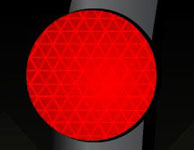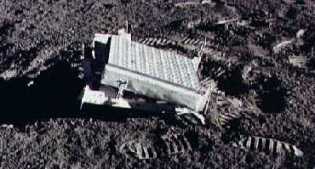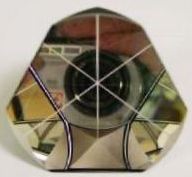 The 'Space Age' was also in full sway, as Apollo astronauts carried out experiments on the lunar surface, bringing back samples of rock and dust for museums and laboratories. They also left behind instruments that enabled remote experiments, none more elegant than the retroreflector arrays placed in five separate locations. To this day, those arrays passively participate in ranging experiments, illuminated directly by powerful laser beams on earth. Indeed, their operational life will extend well beyond the 'Petroleum Age'.
Look closely and you will see 100 individual retro-reflectors in this array, which was left behind along with footprints during the Apollo 14 mission. Each retro-reflector or "Corner Cube" comprises three perpendicular mirrors -- actually extremely precise metallic surfaces. Light coming into a Corner Cube from any angle is reflected back at the same angle toward the source. A powerful pulse of laser light takes about 3.28 seconds to reach the moon and back. Sensors capable of measure the time to the nanosecond theoretically can resolve the range to about half a foot.
The bicyclist held the gift in his hands and stared directly into the thing, seeing nothing but a reflection of his own eye. He smiled and immediately decided that the Corner Cube did not belong on his desk but on the back of his bicycle. An optical device capable of operating all the way to the moon and back would do a wonderful job of reflecting automobile headlights directly into the driver's eyes. Or so he thought.
|


